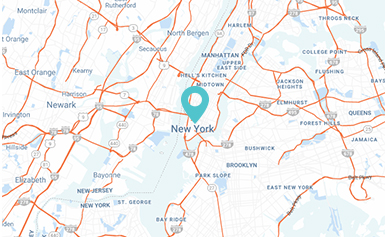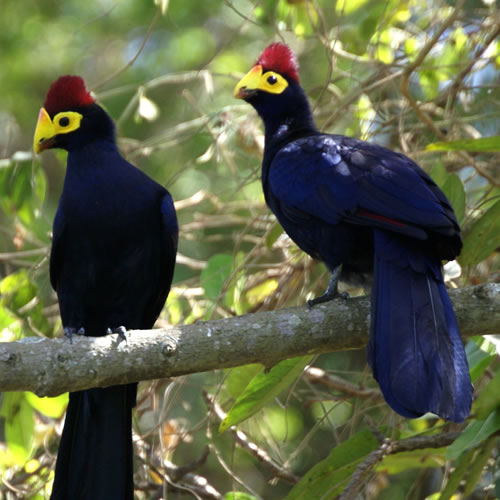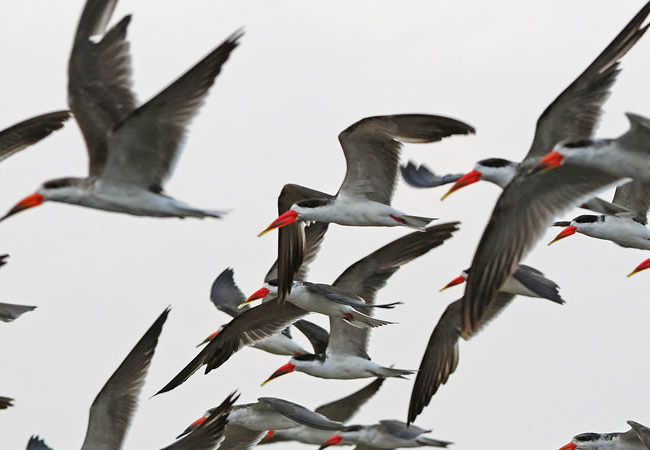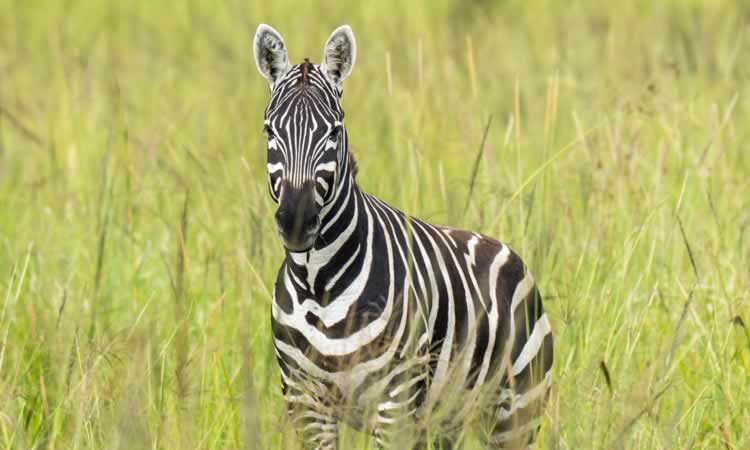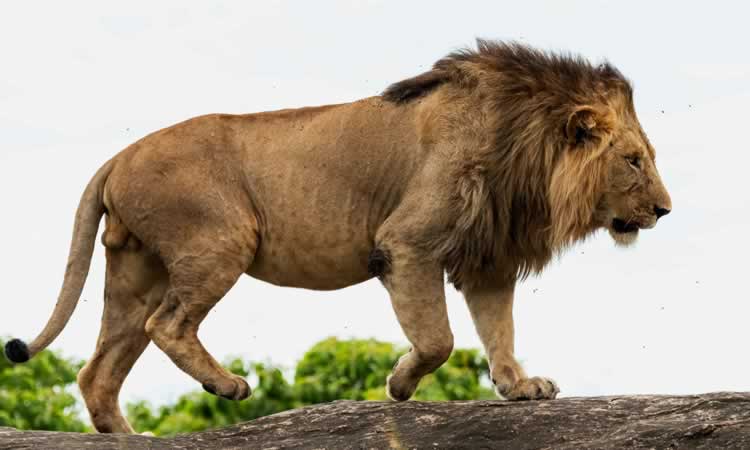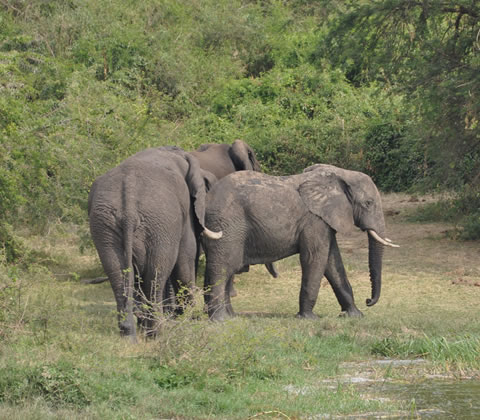20 Day Birding Safari Uganda and Rwanda
/ per person
(0 Reviews)
Experience 20 Days of Birding watching Safari Uganda and Rwanda, exploring and discovering the vast bird species found in the great lakes region of Africa. This safari will take you to the best parts of both countries and allow to see both great birds and beautiful fauna
-
Destination
Tour Plan
1
Day 1: Arrival /Meet
Upon arrival at Entebbe International Airport, meet and greet with our representative for your transfer to Boma Guest House. Check in for dinner and overnight stay.
Overnight: Boma Guest House Entebbe
Meals: Dinner
2
Day 2: Mabamba Swamp And Entebbe Botanical Gardens
After an early breakfast, we bird to Mabamba Wetland about 50km west of Entebbe area on the shores of Lake Victoria. This is one of the few remaining swamps in Uganda protected by the local communities – an extensive papyrus swamp with its labyrinth of channels and lagoons, classified as an IBA (Important Bird Area) and home to several pairs of Shoebills, Uganda’s most famous avian resident. This charismatic species, the only representative in its family, is certainly amongst the most sought-after birds in Africa and we’ll make special efforts today to find it by paddling through the channels by boat. There will of course be a good selection of classic East African water birds: Pink-backed Pelican, Long-tailed Cormorant, Goliath Heron, African Fish-Eagle, African Marsh-Harrier, Yellow-billed Duck, African Water Rail, Allen’s Gallinule, and Malachite Kingfisher along with slightly more local species such as Long-toed Plover, Blue-breasted Bee-eater, Blue-headed Coucal, Papyrus Gonolek, Papyrus Canary, Swamp Flycatcher, White-winged & Papyrus Yellow Warblers.
Lunch break and later go for afternoon birding in Entebbe Botanical Gardens covering an area of 40.7 hectares. The Botanical gardens house a collection of species of plants, several shrubs which are regenerated naturally over the years. These habitats attract an array of birds (206 species) and monkeys. Look out for Orange weaver, Golden and Yellow backed weavers, Superb sunbird, bare-faced Go- away bird, Ross’ and Great blue Turaco among other. Return to Lodge for overnight stay.
Overnight: Boma Guest House
Meals: Breakfast, Lunch and Dinner
3
Day 3: Game And Birds Of Murchison Falls National Park
After breakfast, drive to Murchison falls National Park with lunch break enroute. The drive to the park will be punctuated with brief stops looking out the for the different bird species. We arrive at our accommodation in the evening and birds to look out for include: Cliff chat, yellow fronted Tinker bird, Grey- headed Bush Shrike, Singing Cisticola, Namaqua dove, Green Winged Pytilia, Red-backed Shrike, Crested Francolin, Grey-headed Bush- Shrike, Northern and Black winged Red Bishops, Black-bellied Fire finch, Black-faced Waxbill and March Tchagra.
Overnight: Murchison River Lodge
Meals: Breakfast, Lunch and Dinner
4
Day 4: Game Drive And Afternoon Boat Cruise
We have the whole day birding starting with a morning game drive in the lush Barassus grassland. Look out for Elephants, Buffalo, Giraffe, lions, leopards and a variety of Antelopes. We will look out for a variety of bird while on our extensive morning game drive. Lunch break and later go for an afternoon boat trip on the Nile River up to the bottom of the thundering falls. A variety of water birds to look out for include: Secretary Bird, Abyssinian Roller and Ground Hornbill, Pied Kingfisher, Red-throated Bee-eater, Goliath Heron, Saddle-billed Stork, Sacred Ibis, Fulvous Whistling-Duck, Senegal Thick-knee, water thicket-knee, Black-headed Lapwing, Long-toed Lapwing, Little Bittern Osprey, Red-necked Falcon, Blue-breasted Bee-eater, Vanaceous Dove and Grosbeak Weaver.
Other specialties include; Buff-bellied Warbler, Yellow-fronted Tinker bird, Bar-breasted Firefinch, Red-winged Grey Warbler, Spotted Morning-Thrush, Marabou Stork, Red-throated Bee-eater, Silver bird, Beautiful Sunbird, Black-headed Gonolek, Speckle-fronted Weaver, Golden-backed Weaver, White-rumped Seedeater, Pels Fishing Owl, White Crested Turaco, Bruce’s Green Pigeon, Chestnut-crowned Sparrow Weaver, Carmine Bee-eater, Night jars(Pennant-winged &Standard-winged), White-rumped Canary among many others.
Overnight: Murchison River Lodge
Meals: Breakfast, Lunch and Dinner
5
Day 5: Birding In Budongo Forest.
Depending on the road conditions, there are chances of either birding through the escarpment or through Kanio Pabidi. The escarpment area is well known for its panoramic view of Lake Albert and the Rift Valley, and also being an open area it has quite a number of bird species. Kanio Pabide forest section is well known for its rare bird species including; the Puvell’s Illadopsis. Budongo forest is the largest natural forest area in East Africa. We can expect to find a wide range of other bird species such as; the Crested Guineafowl sporting their punk “hairdos”, White Crested Turaco, Rufous-crowned Eremomela, Yellow and Grey Longbills, Olive-bellied Crombec, Yellow-browed Camaroptera, Little Green Sunbird, and Red-headed Blue Bill among others. There are also many other special birds with a West African origin: White-thighed Hornbill, Green-breasted Pitta, Rufous-sided Broadbill, Blue-breasted, Dwarf & Chocolate-backed Kingfishers, Yellow-crested & Brown-eared Woodpeckers, Yellowbill, Western Black-headed Oriole, Yellow-spotted, Hairy-breasted & Yellow-billed Barbets, Green Hylia, Buff-throated, Black-throated & Black-capped Apalises, Black-eared Ground-Thrush, Rufous-crowned Eremomela, the elusive Lemon-bellied Crombec, Crested & Red-headed Malimbe and also various forest starlings among others. We will also be in a prime area for a wide range of primates such as Blue & Red-tailed Monkeys and Black-and-white Colobus – and if lucky Chimpanzees. There is also a wide variety of butterfly species in the forest. Budongo forest has recorded over 200 butterfly species hence you will also be in for a treat as we look out for these butterflies.
Overnight: Budongo
Meals: Breakfast, Lunch and dinner
6
Day 6: Ful Day Royal Mile Bird Watching
A short bird watching drive from the Hotel at dawn will take us to one of the best of Uganda’s bird watching spots, the Royal Mile. This is Uganda’s historically known leisure spot for the traditional King, hence the name Royal Mile. Here the forest has been cut back a few meters along the sides of the main trail, which makes it a particularly good viewing area in this excellent forest. Uganda Special Bird species here include White-thighed and Black-and-white-Casqued Hornbills, Yellow-spotted and Yellow billed Barbets, Western Black-headed Oriole, along with Red-tailed and Blue Monkeys. Overhead, Sabine’s and sometimes Cassin’s Spine tails soar over the clearings. As we walk quietly along the trail, Red-tailed Ant-Thrushes skulk in the shadows, as do Red-tailed Bristle bill, Scaly-breasted, Pale-breasted and Brown Illadopsis. Greenbuls are always a challenge and include; Cameroon Sombre, Slender-billed, Honey guide and Spotted Greenbuls, whilst other regular species are; Speckled Tinker bird, Yellow-crested Woodpecker, Green Crombec, Rufous-crowned Eremomela, Yellow-browed Camaroptera, Buff-throated Apalis, and both White-breasted and Grey-headed Negro finches. Lower down we should see Chocolate-backed and African Dwarf Kingfishers, White-spotted Flufftails and the elusive Nahan’s Francolin, believed to be one of the most handsome of all Ugandan birds. Other possibilities here are Great Sparrowhawk, Cassin’s Hawk-eagle, Crested Guinea fowl, Tambourine Dove, Grey Parrot, African Emerald and Dusky Long-tailed Cuckoos, Yellow bill, White-throated Bee-eater, Yellow-throated Tinker bird, Yellow-spotted Barbet, Yellow-crested Woodpecker, Dusky Tit, Western Nicator, Blue-shouldered Robin-Chat, Forest Robin, Black-throated and Black-capped Apalis, Yellow-browed Camaroptera, Brown-crowned Eremomela, Lemon-bellied Crombec, Sabine’s and Cassin’s Spine tails, Wilcock’s Honey guide, Yellow and Grey Long bills, Jameson’s Wattle-eye, Blue-throated Brown and Little Green Sunbirds, Rufous Flycatcher Thrush, Yellow-mantled Weaver, Red-headed Malimbe, the Uganda Woodland Warbler and the Ituri Batis.
Overnight: Masindi Hotel
Meals: Breakfast, Lunch and dinner
7
Day 7: Kibale Forest
After breakfast, we drive to Kibale Forest National Park, arriving Fort portal in the late afternoon. Our journey will be punctuated with stops enroute for birding opportunities.
Kibale forest national park is the best safari destination for chimpanzee tracking in East Africa. It contains one of the loveliest and most varied tracts of all tropical forests in Uganda. It hosts 13 species of primates including the chimpanzee. It has 1450 chimpanzees and these represent Uganda’s largest population of this endangered primate. It is also home to the rare L’hoest’s monkey and East Africa’s largest population of the threatened Red Colobus Monkey. Other primates that you may see include; the Black and white Colobus, Blue Monkey, Grey cheeked Mangabey, Red-tailed Monkey, Olive Baboon, Bush baby and Pottos. Kibale forest cover predominates in the northern and central parts of the park. Kibale is highest at the park’s northern tip which stands at 1590m above sea level. The park also boasts 325 bird species, including 6 that are endemic to the Albertine Rift region. They include; the Black-capped Apalis, Blue-headed Sunbird, Collared Apalis, Dusky Crimson wing, Purple-breasted Sunbird and Red-faced Woodland Warbler. If you are lucky you may also see the; African Pitta, Green-breasted Pitta, Black Bee-eater, Yellow-spotted Nicator, Yellow-rumped Tinker bird, Little Greenbul, Black eared Ground-Thrush, Brown-chested Alethe, Blue breasted kingfisher, Abyssinian Ground-Thrush, and the Crowned Eagle.
Overnight: Chimpanzee Guest House
Meals: Breakfast, Lunch and dinner
8
Day 8: Chimpanzee Tracking
After an early breakfast we drive to Kibale Forest National Park visitor center for briefing and chimp tracking. The activity may last from a few hours to several hours. Kibale forest is home to 13 primates of Uganda. Birding in the afternoon along the main road may be productive. Depending on the weather predictions, birding Bigodi wetland is also productive with riverine forest birds including; Speckle-breasted Woodpecker, Cabanis’s Greenbul and Joyful Greenbul as well as White-spotted Fluff tail, Dusky and Olive Long tailed Cuckoo, Lesser Honey guide, Blue-shouldered Robin-Chat, White-chinned Prinia, Grey Apalis, Olive-green Camaroptera and White-collared Oliveback.
Overnight: Chimpanzee Guest House
Meals: Breakfast, Lunch and dinner
9
Day 9: Queen Elizabeth National Park
Queen Elizabeth National Park is the second largest national park in Uganda. In terms of diversity this park ranks among the best birding destinations in Uganda with over 610 species recorded, and a one day record of 296 species and these include; Harlequin Quail, Blue Quail, Small (Common) Buttonquail, African Crake, White winged Warbler, Martial Eagle, African Skimmer, Verreaux’s Eagle-Owl, Papyrus Gonolek, Amur Falcon, Ovampo Sparrowhawk, Lowland Akalat, Greater and Lesser Flamingo, Shoebill, Black Bee-eater, Caruthers’s Cisticola, Terek Sandpiper, Secretary Bird, and Temminck’s Courser.
Afternoon launch cruise along Kazinga channel as we look out for such bird species and other wild life coming to water at the channel. During the launch cruise we expect to meet congregations of African Skimmers, Striated Heron, African Spoonbill, African Crake, Water Thick-knee, Three-banded Plover, Marsh Sandpiper, Green Sandpiper, Wood Sandpiper, Common Sandpiper, Grey-headed Gull, Plain Martin, Lesser Swamp-Warbler, Collard Pranticoles, Yellow-billed Ox-pecker and many others.
Overnight: Simba Safari Lodge
Meals: Breakfast, Lunch and dinner
10
Day 10: Game Drive and Maramagambo
Morning game drive through the diverse eco system of savannah to rain forest, from dense papyrus swamps and brooding crater lakes to the vastness of Lake Edward is a major contribution to the fact that the park boasts one of the highest biodiversity ratings of any game park or reserve in the world. Look out for the Lions, leopard, giant Forest Hog, cape buffalo, Elephant, Deffassa water buck, Uganda Kob, Topi and bush buck
Later in the afternoon, we drive to Imaramagambo Forest. Specialties here include; the Yellow-bellied and Jameson’s Wattle-eyes, Black Bee-eater, White-Tailed and Red-Tailed Ant-Thrush, Brown and Grey-chested Illadopsis, Shinning Blue Kingfisher, Brown-Eared Woodpeckers, Narina Trogon, Least Honey guide, Grey Greenbul and Brown-Chested Alethe. The trail through the forest leads past a bat cave, which is rather impressive, and if we are lucky we may come across a Python that lives in the cave and feasts on the bats.
Overnight: Simba Safari Camp
Meals: Breakfast, Lunch and Dinner.
11
Day 11: Bwindi Forest National Park
After breakfast, we head to Bwindi Forest National Park and depending on the section we are to track Gorillas and road conditions at time of travel, we drive through Ishasha Sector of Queen Elizabeth National Park famous for tree climbing lions.
Arrive Bwindi Forest National park with an afternoon forest birding at Munyaga trail. Bwindi is home to over 23 highly localized Albertine Rift endemics.
Overnight: Buhoma Community Rest Camp
Meals: Breakfast, Lunch and Dinner.
12
Day 12: Gorilla Tracking
After early breakfast, get your back packs with your cameras and packed lunch in, carry your raincoats and your shoes fitted with hiking boots, head to the departure point for Gorilla tracking. You will be briefed by the ranger/guide at the park on what to expect on this encounter. Later set out into the forest in search of the habituated Gorillas in their wild home. The trek itself is interesting and with luck may yield sights of other wild species that seek refuge in the forest including elephants, chimpanzee, various small antelopes, monkeys and a variety of bird species.
Follow the guides as they identify various clues like the gorilla nests, droppings to sometimes locate the where these gentle giants are as they wonder about the forest in search of a day’s meal. The trek may take just a few minutes to several hours depending on where the Gorillas are at the time of the trek. The encounter is rewarding as you get close to the gentle giants feeding, grooming while the youngsters swing from vine to vine in a delightful display. Spend an hour with the Gorillas upon location before returning to your accommodation.
Overnight: Buhoma Community Rest Camp
Meals: Breakfast, Lunch and Dinner.
13
Day 13: Full Day Birding On Main Trail
Bwindi is generally at a higher altitude and therefore is cooler. Temperatures range between 10 and 18 degrees centigrade. Forest birding at Bwindi ranks the best in Uganda. It is home to over 23 highly localized Albertine Rift endemics. Specialty birds include; Black-faced Rufous Warbler, Grauer’s Warbler, Banded Prinia, Black-faced Apalis, Black-throated Apalis, Mountain Masked Apalis, Red-throated Alethe, Yellow-eyed Black-flycatcher, Ashy Flycatcher, Dusky-blue Flycatcher, Chapin’s Flycatcher, Chin-spot Batis, Cassin’s Grey Flycatcher, Rwenzori Batis, Black-and-white Shrike-flycatcher, White-bellied Crested-flycatcher, Pale-breasted Illadopsis, Mountain Illadopsis, African Hill-Babbler, Dusky Tit, Blue-throated Brown Sunbird, Blue-headed Sunbird, Northern Double-collared Sunbird, Grey-headed Sunbird, Mackinnon’s Fiscal, Sooty Boubou, Pink-footed Puff back, Doherty’s Bush-shrike, White-naped Raven, Montane Oriole, African Golden Oriole, Stuhlmann’s Starling, Narrow-tailed Starling, Waller’s Starling, Strange Weaver, Brown-capped Weaver, Black-billed Weaver, Dusky Crimsonwing, Yellow-bellied Waxbill, Magpie Mannikin, Yellow-crowned Canary, Thick-billed Seedeater, Streaky Seedeater, African Green Broadbill, Shelly’s Crimsonwing, Oriole Finch, Mountain Buzzard, Ayre’s Hawk-eagle, Handsome Francolin, Black-billed Turaco, Barred Long-tailed Cuckoo, African Wood-Owl, Rwenzori Nightjar, Scarce Swift, Bar-tailed Trogon, Cinnamon-chested Bee-eater, Black Bee-eater, (Western) Bronze-naped Pigeon, Red-chested Owlet, Tullberg’s Woodpecker, Elliot’s Woodpecker, African Broadbill, Western Green Tinkerbird, Lagden’s Bush Shrike, Petit’s Cuckoo-shrike, Grey Cuckoo-shrike, Archer’s Ground Robin, Toro Olive-Greenbul, Ansorge’s Greenbul, Equatorial Akalat, White-bellied Robin chat, Olive Thrush, White-tailed Ant-thrush, Grauer’s Rush-warbler, Short-tailed Warbler, Neumann’s Warbler and Red-faced Woodland Warbler.
Overnight: Buhoma Community Rest Camp
Meals: Breakfast, Lunch and Dinner.
14
Day 14: Pick Up Ex Cyanika Border And Depart For Volcanoes National Park
After early breakfast, check out of your rooms and drive to Cyanika Border of Uganda and Rwanda. On arrival at the Cyanika border, cross as you view different sites and proceed to your hotel for dinner and overnight stay.
Overnight: Kinigi Guest House
Meal Plan: Lunch, Dinner, bed & breakfast
15
Day 15: Gorilla Tracking
After an early breakfast, you will proceed to the National Park headquarters – Kinigi to meet your guides for the day. After completing our park formalities, we are embark on a once in a life time experience of tracking mountain gorillas. Once you spot them you are allowed to spend an hour watching your closest long lost cousin. This is perhaps one of the most breath-taking wildlife experiences on earth!!! You get so close to these awesome giant primates. You stare at each other blankly not knowing who to break the long silence first. Tracking the gorillas through the light mountain forest on the slopes of the Virunga is a magical experience. These massive primates are extremely rare, with less than 700 living today. You will get within meters of the family, and be privileged to spend an hour amongst them. The trekking may be fairly strenuous; up to six hours or longer at a relatively high altitude. We encourage for your own enjoyment to make sure that you are perfectly fit and healthy. (We’ve had people as old as 70 years old do gorilla tracking so this should not be a problem; all you need is to ask your driver guide to request a shorter group for you if you cannot trek far)It is important to bring good hiking boots, long trousers, gloves for protection against stinging nettles, some snacks & sweets (for you, not the gorillas) as well as sufficient water as the rain forest gets hot and humid during the day. You will spend one hour with the gorillas, but it is an hour you will never forget. Return to your hotel for lunch and later dinner and overnight.
Activities: 1 Gorilla Trek
Overnight: Kinigi Guest House
Meal Plan: Lunch, Dinner, bed & breakfast
16
Day 16: Birding + Iby’iwacu Village Visit
This day is set out for birding in the Volcanoes National Park. The trip may yield sightings of Adult monkeys frolic in plain view, feeding on bamboo leaves and leaping from perch to perch. Females carry their young, completely comfortable among onlookers.
Later visit Iby’iwacu Cultural Village a Non-Profit umbrella organization that aims at improving the lives of reformed poachers and communities around Rwanda’s Volcanoes National Park through provision of conservation incentives, supporting community enterprise development and livelihood based projects. Return to your hotel to freshen up for dinner and overnight.
Overnight: Kinigi Guest House
Meal Plan: Lunch, Dinner, bed & breakfast
17
Day 17: Birding + Nature Walk
Take an early morning breakfast then with your packed lunch drive to this park for your guided birding activity. Nyungwe national park is found in the Albertine Rift valley eco- region and it’s very famous for its vegetation cover as well as being a home to many different bird species as compared to the other national parks. There are over310 species that have been recorded in Nyungwe which reflects large habitat diversity and the altitudinal range. These also include the 25 species of the Albertine Rift mountains endemic bird Area which occur in Rwanda, the Rockefellers’ sun bird, Chapin’s flycatcher; more so 11 of these 23 species of the Guinea Congo Forest biome and also 71 of the 74 species of this biome of the afro tropical highlands that occur in Rwanda and have been recorded at this site. Usually, Nyungwe forest is also the most vital forest for the conservation of montane birds in the region. Later depart for your nature walk visiting Kamiranzovu waterfall. The forest comprises amongst many things at least 200 tree species over 280 bird species and more than 100 different types of colorful butterfly which make it a true feast of the senses for the nature lover. Later return for dinner and overnight at your hotel.
Overnight: Gisakura Guest House
Meal Plan: – Lunch, dinner, Bed & breakfast
18
Day 18: Depart For Akagera National Park
After an early breakfast depart for Akagera National Park located along the eastern border of Rwanda, where the typically hilly countryside gives way to the savannas of the Great Rift Valley. Dominated by lakes, swamps and marshland, the area boasts a huge compliment of nature and wildlife that cannot be found elsewhere in the country. We will arrive before lunch at the lodge. Have lunch then in the afternoon your exploration starts with a boat trip on Lake Ihema which is a very rewarding for seeing the large number of hippos, the huge Nile crocodiles and many birds. They are the most interesting part of the park especially for birders.Return to your hotel for dinner and overnight.
Overnight: Akagera Game Lodge
Meal Plan: Full board – Lunch, dinner, Bed & breakfast
19
Day 19: Depart For Kigali
After an Early breakfast depart with your packed lunches for a full day game drive and your exploration starts with a visit to the giraffe valley. Akagera National Park is characterized by woodland, swamps, low mountains and savannah. The varied terrain shelters wildlife including zebras, giraffes, elephants, lions and hundreds of bird species, such as the rare shoebill stork. In the southern part of the park, vast Lake Ihema is home to hippos and crocodiles. Later drive on to Kigali arriving at your hotel for overnight.
Overnight: Gloria Hotel
Meal Plan: Half board – Lunch, Bed & breakfast
20
Day 20: Depart
After breakfast and depending on your flight departure timings your day starts with a tour of the city. Named in 1907 by Dr. Richard Kandt, the first colonial resident governor of Rwanda; Kigali city is surrounded by lush hills of green and is referred to as the land of a thousand hills. Get to visit interesting spots which may include; the craft market, Gisozi genocide memorial site & Kigali museum. Engage in last minute shopping in one of the friendliest African capitals, before returning to the airport for your onward international flight back home.
Safari includes
• Airport transfers and meet & greet service by our local representatives.
• All Accommodation ( in double/twin rooms)
• Meals as per itinerary
• Birding as per itinerary
• Bird guise
• 1-litre bottled mineral water per person per day whilst on safari
• Transportation by a 4*4wd Safari customized vehicle
• 1 gorilla permit ($1500) per person in Rwanda, to be paid in advance
• 1 gorilla permit ($600) per person in Uganda, to be paid in advance
• Game drives as per the itinerary
• City tour
• Boat trip on lake Ihema
• Launch cruises as per itinerary
• Visit to the top of Murchison falls
• Vehicle and guide cross border fees (Uganda/Rwanda)
• Chimpanzee tracking permits
• Canopy walk
• En route lunches
• Services of a professional English speaking driver/guide
• Sightseeing and excursions as described in the itinerary
• Flying Doctor services The package excludes:
• International flights
• Visas
• Travel Insurances
• Driver guide or local escort tips
• Drinks and dining rooms tips,
• Porter age,
• Personal travel and baggage
• Telephone bill,
• laundry and any items of a personal nature
• Activities not mentioned in the program
• And any other items of personal nature.
• Airport transfers and meet & greet service by our local representatives.
• All Accommodation ( in double/twin rooms)
• Meals as per itinerary
• Birding as per itinerary
• Bird guise
• 1-litre bottled mineral water per person per day whilst on safari
• Transportation by a 4*4wd Safari customized vehicle
• 1 gorilla permit ($1500) per person in Rwanda, to be paid in advance
• 1 gorilla permit ($600) per person in Uganda, to be paid in advance
• Game drives as per the itinerary
• City tour
• Boat trip on lake Ihema
• Launch cruises as per itinerary
• Visit to the top of Murchison falls
• Vehicle and guide cross border fees (Uganda/Rwanda)
• Chimpanzee tracking permits
• Canopy walk
• En route lunches
• Services of a professional English speaking driver/guide
• Sightseeing and excursions as described in the itinerary
• Flying Doctor services The package excludes:
• International flights
• Visas
• Travel Insurances
• Driver guide or local escort tips
• Drinks and dining rooms tips,
• Porter age,
• Personal travel and baggage
• Telephone bill,
• laundry and any items of a personal nature
• Activities not mentioned in the program
• And any other items of personal nature.
The cost for the above safari will be
Using Mini Van in Uganda and Land Cruiser in Rwanda – USD7705 per person
Using Land Cruisers both Uganda and Rwanda – USD8125 per person.
Excluding Gorilla treks both in Uganda and Rwanda pay Less USD2263 per person
(This will leave us one day less ending trip on Day 19, we will leave out Volcanoes National Park (day 15). In Bwindi, another birding can be done.)


